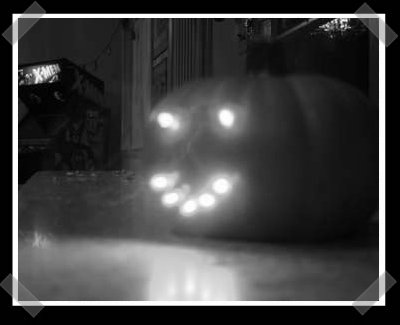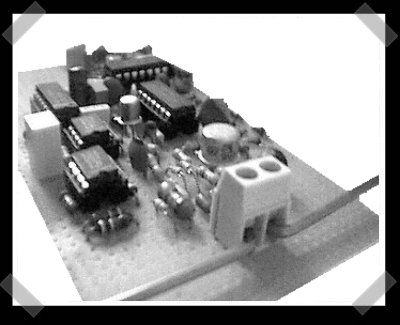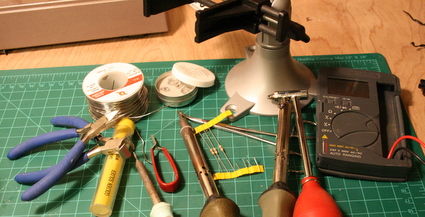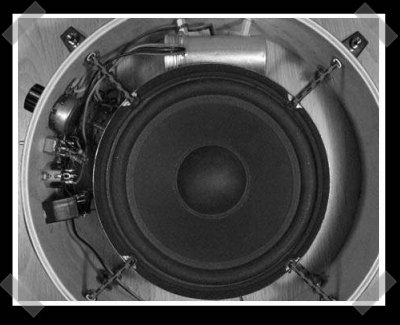
Happy Halloween! I’m in the mood for an extra, and I’ve got some stuff that’s been turning to zombies from the tipline.
Pictured above is a nice simple LED pumpkin sent in by [John]- perfect for the hacker with less than stellar art skills.
Let’s not forget [mastershake]s Hack-A-Day pumpkin from last year. Where’s the THAD pumpkin you promised? [Wolfgang] sent in these mini pumpkin bots – they look like toys, but they’re made from XBox parts and radio control cars.
Last year Max sent in his talking Halloween basket. (I always wanted to strap that voice module to a co-workers chair…)
[Brandon] built a budget (~$150) guitar hero controller out of a Gibson Epoch guitar from target.
This scanner cam has been around for a while, but I admire how he keeps fine tuning and tweaking the design. Thanks to [Loopymind] for passing it along.
I keep getting emails telling me that Google Earth has a flight simulator. Yes. We all know about it.
Month: October 2007
Ion Cooler 3.0 (return Of InventGeek)

[Jared]s been taking a bit of a hiatus, but he assures me that he’s gearing up for a bunch of new projects. The first sign that he’s awakened from his slumber is his latest take on the Ion Cooler. This time he’s built a CPU specific version. The cooler is made from off the shelf materials – heap pipe heat sink, copper pipe, tack nails, acrylic and even the ion generator are easy to get. It’s an interesting way to cool your PC if your comfortable with 10,000 volts or so next to your CPU.
DIY Ultra Wide Band Radar

[Andy] sent in this pdf (mirror) describing a simply diy UWB Radar project. It’s not intuitive, but by using a wide frequency range for low power, short distance purposes, the system should avoid interfering with other radio systems. The paper has a complete circuit schematic, and offers some suggestions for adding communications to the signal. Unfortunately, to really tune the thing, you’ll need a kick-ass oscilloscope.
USB Gameboy Cartridge Project

[Jose] thinks that the Little Sound DJ is too expensive and hard to find. Now he’s trying to build an inexpensive USB programmable GameBoy cartridge. Currently he’s working with a LPC2148 development board. It’s not quite clear where he’s going with this. He certainly wants to add USB programming, but it seems that he’s trying to hack a mp3 decoder in there as well. [update: yes, I know how to spell cartridge!]
Followup: Soldering How-To

The response to the soldering How-To was fantastic. You guys seem to want more and we’re looking forward to bringing you more How-Tos in the near future. If there’s a specific topic you’d like to see, let us know and I’ll see what we can do.
[justin] suggests picking up a flux pen with your next electronics order. I’ll probably take him up on that idea. [xrazorwirex] suggests using a pure form of alcohol like everclear for cleaning boards. I keep a few bottles of tape head cleaning solution – it won’t leave residue like rubbing alcohol and you don’t have to be 21 to buy it. [MattS] suggests cutting your leads and then soldering to prevent corrosion later on. This usually isn’t a problem for small projects, but it’s a good idea for anything that’ll see a less than ideal environment later on. [Josh Malone] is fond of his Hakko 936 soldering iron. I have to agree with everyone that a temperature controlled iron is the way to go. I was very happy with my Tenma which lasted well over 10 years. [David Moisan] suggests buying purpose made soldering sponges from MCM to preserve the plating on your soldering tip. Considering the varied contents of kitchen sponges, this is definitely a good idea. [Forrest M. Mims III] freaked me out a bit when he commented on the post – he notes that he taught his son to solder when he was 4 years old! I’m a bit more conservative, but lets be honest – I learned how to solder from his books when I was a kid.
Speaker As A Microphone

[Nathan] sent in his speaker microphone project. Speakers and microphones are physically similar – usually mics are much smaller to allow decent high frequency response. In this case, [Nathan] wanted something to pick up kick drums or bass guitars, without the cost of a commercial version like the subkick. It’s built around a dual coil 6.5 inch subwoofer. The passive circuit design allows the coils in the speaker to be configured for differing impedance, phase and isolation.
Stroboscope LED Fan Clock

[sprite_tm] sent in one of his latest little adventures – and I love it. To create his stroboscope fan clock, he put a couple of red and green clock hands onto a standard PC fan(I love Panaflo fans), then he built a circuit to strobe a RGB LED to create a set of virtual clock hands on the spinning fan. An ATTiny2313 does all the work, with the help of some transistors to drive the LEDs.











